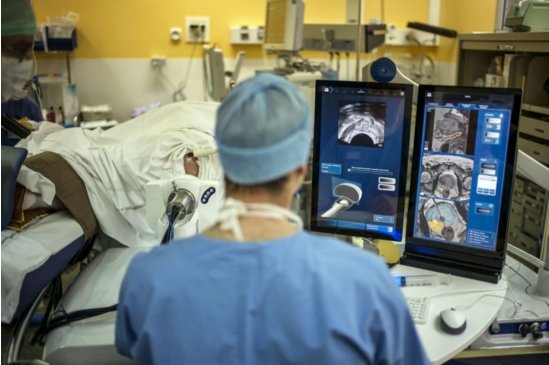Most experts believe that one important element of Vice President Biden’s cancer “moonshot” has to be a major database that researchers and clinicians can access to help them develop new therapies or treat patients.
Both the American Society of Clinical Oncology and the American Association for Cancer Research have launched such projects, as have some big academic cancer centers.
And Thursday, during a teleconference with reporters to discuss President Obama’s State of the Union call for a stepped-up war on cancer, the National Cancer Institute’s acting director, Douglas R. Lowy, stressed that his agency is nearing completion on an effort of its own.
Most experts believe that one important element of Vice President Biden’s cancer “moonshot” has to be a major database that researchers and clinicians can access to help them develop new therapies or treat patients.
Both the American Society of Clinical Oncology and the American Association for Cancer Research have launched such projects, as have some big academic cancer centers.
And Thursday, during a teleconference with reporters to discuss President Obama’s State of the Union call for a stepped-up war on cancer, the National Cancer Institute’s acting director, Douglas R. Lowy, stressed that his agency is nearing completion on an effort of its own.
When it launches this summer, the Genomic Data Commons will be able to hold data from as many as 50,000 patients and clinical trial participants, including genomic analysis of their cancers, the treatments used, their responses and outcomes, Lowy said. The information would come not just from NCI clinical trials but from other research as well.
Now that cancer is considered a disease of the genome, with at least hundreds of variations, access to information about common mutations and the efforts to fight them is considered critical for progress against the disease.
The NCI portal, which was announced in December 2014, will open with two big data sets containing information from the Therapeutically Applicable Research to Generate Effective Treatments (TARGET) program and the Cancer Genome Atlas. More information would be added later.
Obama put Biden, whose son Beau died of cancer last year, in charge of the ramped-up work to find cures. Biden wrote in a post Tuesday night that he wants to seize the moment, with advances in immunotherapy, combination therapy and genomics having set the stage for such an intensified push. He already has met with more than 200 physicians, researchers and philanthropists in preparation for the effort and is scheduled to visit the University of Pennsylvania’s Abramson Cancer Center Friday for a roundtable discussion about strategy.
During the media teleconference, NIH Director Francis S. Collins declined to say whether Obama will devote even more money to cancer programs in his upcoming budget, but he told reporters to “look closely and see what kind of resources are attached” when the plan comes out next month. The National Cancer Institute’s budget was increased by $260.5 million, to $5.21 billion, in the recently approved fiscal 2016 budget. About 70 percent of that funding goes for research.
Even without a moonshot, Collins noted, the United States has seen a 23 percent drop in cancer deaths over the past two decades. Five-year survival rates are up for many cancers.
But officials still estimate that 1.7 million people will be diagnosed with the disease in 2016. About 600,000 people will die of the disease this year.
The Clearity Foundation has kept such a database since 2008. We encourage others to sign up to change their odds and change the future by clicking here and learning more about Tumor Blueprints by clicking here.
To read this entire article on The Washington Post, click here.


